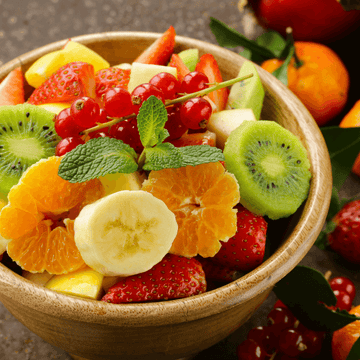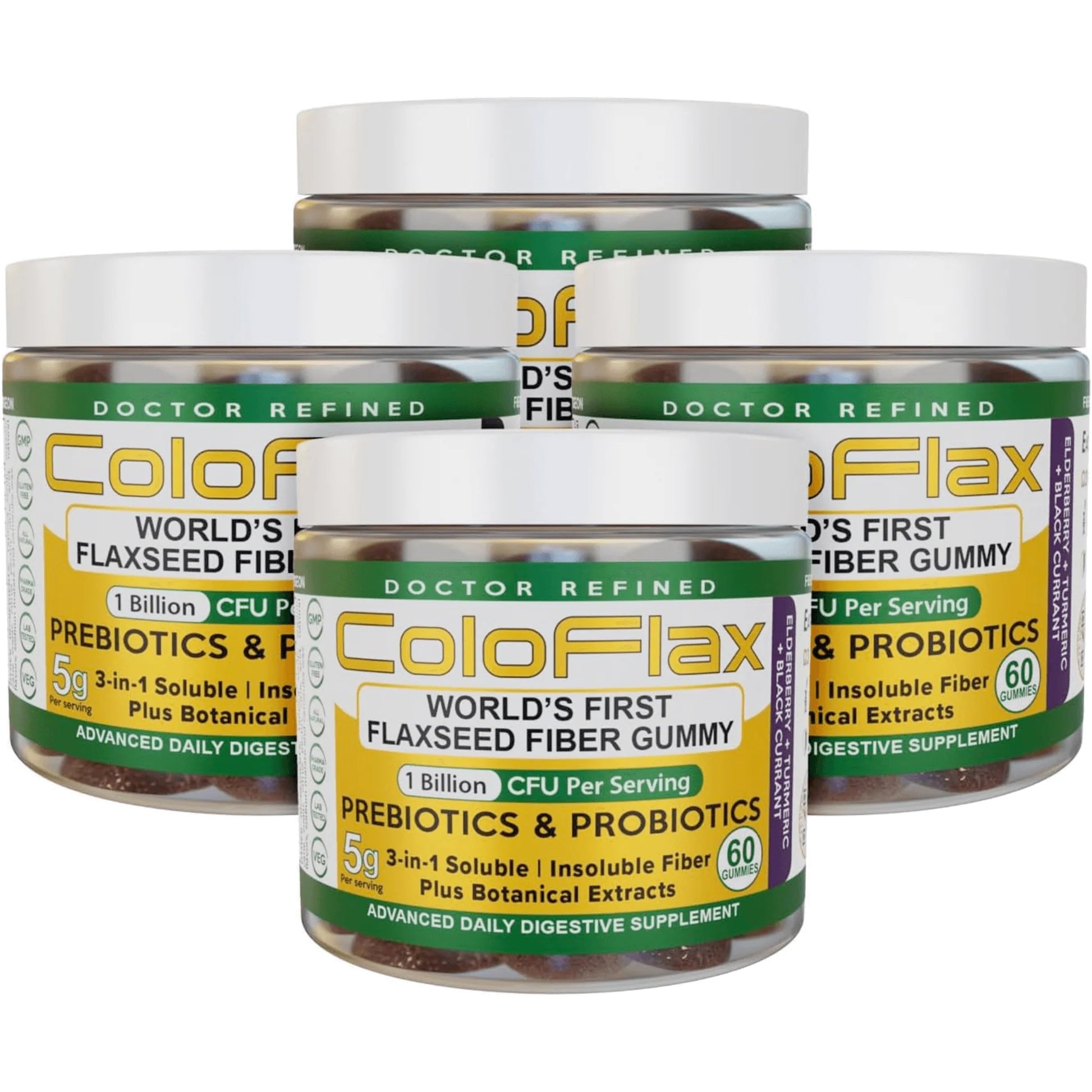Fiber, vitamins, minerals, antioxidants—fruits are true superfoods that we all need in our diet. Sure, they have sugar, and they can be quite calorific, but those sugars are natural, those calories are good, and the general consensus is that we all need to eat more fruit.
But which fruits top the scales in the fiber and nutrient department? Most of them are good, but which ones are best?
Let’s find out!
Kiwi Fruits

When you think of fruits that are high in vitamin C, your mind probably jumps straight to oranges, limes, or lemons. But while citrus fruits are loaded with this immune-boosting vitamin, they don’t come close to the kiwi.
On a gram-for-gram basis, there is nearly 50% more vitamin C in kiwis than oranges and lemons. A medium-sized kiwi fruit will give you nearly all of your total DV for vitamin C, and that’s not all.
A single kiwi also contains around 3 grams of dietary fiber as well as antioxidants that support overall health and well-being.
If you’ve ever eaten or even seen kiwi fruit, you’ll understand how impressive that statement is. They are tiny, and once they have been peeled and chopped (or eaten with a spoon like a soft-boiled egg), they are gone in a matter of seconds. A kiwi also contains around 50 calories, so it’s the perfect low-calorie snack.
Not a big fan of the tart flavor? Try chopping a kiwi into a fruit salad, being sure to add apple juice or grape juice to balance the flavor. You can also chop it into Greek yogurt with a little honey and some chopped nuts—a high-fiber, high-protein snack boosted with healthy fats.
Apples

An apple a day won’t keep the doctor away (unless you throw it at them), but that saying is rooted in truth as these are incredibly healthy fruits.
Apples contain a mixture of soluble and insoluble fiber, both of which are needed to maintain a healthy gut. Soluble fiber dissolves in water and creates a gelatinous substance, just like the countless fiber supplements you can find on the shelves in your local pharmacy. Insoluble fiber is indigestible and adds to this bulk.
By virtue of their fiber content, apples could help to support digestive health and blood sugar levels. They are also packed with antioxidants (including quercetin), which prevent against oxidative stress.
To get the maximum benefits, look for red varieties (including Red Delicious and Gala), as the pigments responsible for those striking red, pink, and purple hues (anthocyanidins) are antioxidants linked to a number of health benefits. Of course, you should also leave the skin on to ensure you’re getting as many of those antioxidants as possible.
Blueberries

A list of the healthiest foods and the best superfoods wouldn’t be complete without an appearance from blueberries. They have been in and out of the spotlight many times over the years, and it seems that the world rediscovers their benefits every few years or so.
So, what’s so great about blueberries?
Well, most of the benefits are linked to the antioxidant content. Anthocyanidins, the same compound found in the skin of red apples and other red/pink/purple fruits, can also be found in blueberries. In fact, blueberries are one of the best sources of this pigment, as that’s where they get their deep purple color.
Anthocyanidins could help to support cardiovascular health and may also aid with cognition, weight loss, and more.
A cup of blueberries contains around 85 calories and has 4 grams of fiber—another reason to add these sweet little berries to your diet.
Last but not least, the United States is one of the world’s biggest producers of blueberries. We’re fortunate enough to have these fruits in abundance, which means they are widely available and cheap.
Raspberries

Raspberries are low in calories and very high in fiber. A single cup of raspberries will give you about 8 grams of fiber, despite containing just 65 calories. You will also get around half of your DV of vitamin C and manganese, as well as between 5% and 15% of vitamin K, iron, magnesium, potassium, copper, vitamin E, and several B vitamins.
These delicious red fruits are also a good source of antioxidants and they are very versatile. You can add them to smoothies, plop them on pancakes, mix them into a fruit salad, or just eat them whole.
Grapefruit

Grapefruit is an acquired taste, to say the least. But if you can stomach the bitterness, you should definitely consider adding it to your diet. Grapefruit is high in vitamin C, potassium, and magnesium. It’s also rich in antioxidants that can support overall health.
Some studies have linked grapefruit consumption to increased weight loss, as well as improved blood sugar levels. But it’s not all good news.
Grapefruit can inhibit some medications, so if you take any meds, check to see if they will interact with grapefruit before adding it to your diet. If you’re not sure, ask your doctor.
As for how you eat it, well, you can add some slices to a fruit salad or try it with a sprinkle of sugar. Just remember, the more sugar you add, the less healthy it becomes, so if you need to use huge quantities of sugar just to make it palatable, you’ll be better off eating a kiwi or even an orange.
Blackberries

Just like blueberries, blackberries are a great source of anthocyanidins. They also contain as much fiber as raspberries, so if you’re looking for the perfect cross between the fiber of raspberries and the benefits of blueberries, they are ideal.
We don’t produce as many blackberries as we do blueberries in the United States, but they are still fairly common. In fact, outside of Asia, the US is one of the main producers of these fruits. Mexico also grows them in abundance.
Other Healthy Fruits
To encourage you to add more fruits to your diet, here are a few more of the healthiest options:
- Bergamot: Bergamot is a type of citrus fruit that grows in southern Italy. In recent years, it has gained popularity thanks to research suggesting that it can support heart health. The problem with bergamot is that it’s not easy to get your hands on fresh fruit while dried and candied options don’t provide the same benefits.
- Bananas: A large banana contains around 120 calories, making it one of the most calorific fruits on this list. But those 120 calories will give you several grams of fiber, B vitamins, and lots of potassium. It’s also not as sweet or messy as berries and citrus fruits and so it’s easy to take to work/school as a snack.
- Prunes: If you’re suffering from constipation, try a serving of prunes. Not only are they rich in fiber, but they are a natural source of sorbitol, which draws water into the intestine and helps to loosen everything up.
- Avocado: Believe it or not, avocado is a fruit, and a very healthy one at that. It’s loaded with good fats and fiber and is also a great source of vitamin E. The only downside is that it’s high in calories, with a medium avocado containing around 240 to 250 calories. For perspective, that’s the same as about 5 kiwi fruits.
- Lemons: Lemons are very good for you…on paper. In fact, if we focused purely on the nutritional benefits, they would feature much higher on our list. The issue with lemons is that it’s hard to eat enough of them, as you can’t simply chomp on a lemon as you do with an apple or orange. Still, adding a wedge of lemon to a fish dish, salad, dessert, or drink can make a big difference.
- Passionfruit: Gram for gram, passionfruit is one of the highest-fiber fruits. It’s also sweet, tart, and delicious. You can add passionfruit to Greek yogurt to create a high-fiber, low-fat snack or add some to a smoothie.
- Pomegranates: Pomegranates are crunchy, sweet, and delicious—like tiny apples. You can add them to sweet and savory dishes or just eat them with a spoon. Pomegranates are high in fiber, with a single cup of seeds containing around 7 grams. They are also high in vitamin C and vitamin K.
- Tomatoes: Tomatoes are the most common fruit in the world. Millions of metric tons are produced every year and used in sauces, stews, and salads. Tomatoes are very nutritious and low in calories. They are also one of the best sources of an antioxidant known as lycopene, which has been linked with a host of health benefits.
- Cherries: Another great source of anthocyanins, cherries are also high in vitamin C and potassium while also containing over 3 grams of fiber per 100-calorie serving. After Turkey, the United States produces the greatest tonnage of cherries every year, so there are plenty of these fruits to go around.
Fruits that You Should Avoid
In recent years, there has been a trend toward demonizing fruit because of its sugar content. But refined sugar is not the same as the sugar found in fruit. Sure, it’s not great if you’re on a low or no-carb diet, and it’s also a bad idea to subsist entirely—or even mainly—on fruit. But most nutritionists recommend consuming several portions of fruit a day.
There are some caveats, though.
Firstly, fruit juice is not the same as whole fruit. The juice is where you’ll find the flavor, sweetness, and most of the nutrients, but it doesn’t contain any of the fiber. Not only is that bad news for your gut, but it could also negate many of the other benefits.
Needless to say, slowly consuming a whole piece of fruit packed with fiber is not the same as downing the juice of several fruits in the space of a few seconds.
It’s a similar story with dried fruit.
We personally think that dried fruit is a great way to treat yourself. If you have a sweet tooth, swap those candies and chocolates for Medjool dates and dried figs and you’ll get more health benefits without really missing anything. But refrain from eating too much.
Dried fruit contains all the fiber and some of the nutrients, but it’s also much higher in sugar and calories on a gram-for-gram basis, so it’s easy to go overboard.
As for candied fruits and fruit canned in syrup, it’s really no different than candy.






